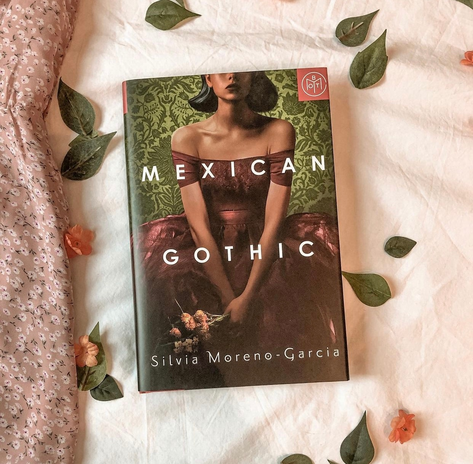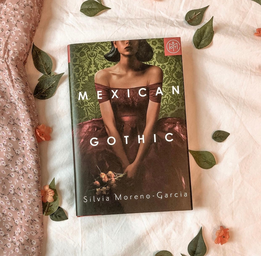I’m lucky enough to be taking Gothic Imagination, an impeccable class taught by Professor Renée Fox (nearly every UCSC Literature student knows to enroll in anything with her name attached), which is how I’ve come in contact with the novel Mexican Gothic.
This novel, penned by Silvia Moreno-Garcia, was broken up into three chunks over just a bit longer than a week. I struggled to stop myself at each intermission to remain in sync with the class. Mexican Gothic is easily devoured in one sitting, however this slower pace suited the writing because I was able to notice so many more small intricacies injected into the prose that made the novel such an amazing experience.
Don’t worry, no spoilers. :)
I think that everyone should read Mexican Gothic because it’s a great introduction to the Gothic genre, which you are probably unwittingly already familiar with. “Gothic” is a pretty expansive term; the genre bleeds into all others, blanketing over anything remotely spooky. Some examples in pop culture that you might recognize are TV shows like Scooby Doo and Buffy the Vampire Slayer, movies such as Practical Magic and anything touched by Tim Burton, as well the more obvious classic books like Frankenstein and Dracula.
What makes Mexican Gothic “Gothic” you ask? Well, lots of things. Of course it includes the obligatory opposition between the natural and the supernatural, or, the ordinary and the extraordinary, which is a huge must for the Gothic. Although the plot takes place in 1950’s Mexico, it is injected with the fog of Victorian England both figuratively and literally (you’ll find out what I mean when you read it). In addition to the spookiness of the supernatural and Victorian England, an important aspect to the Gothic genre which is deeply embedded within Mexican Gothic is counterculture, opposition to the status quo.
I promise, I’m not going to spoil the story, BUT it’s important that as you slip into the pages you pay close attention to the relationship between English and Mexican. Through the characters that feel like real people, this book artfully plays with the colonizer/colonized dynamic and continues the discussion of a relationship that negatively affects the world today. Colonization is still occurring today and colonization that “ended” decades ago never really did as racist institutions and generational trauma bleed into the future.
One of these characters that breathes on the page is Noemí, our heroine. Mirroring the first ever Gothic novel, The Castle of Otranto by Horace Walpole, Mexican Gothic is driven forward by the bravery of women rather than men. It’s hard to dislike Noemí and the secondary heroine, her cousin Catalina, from the get-go. As a woman, they’re utterly fantastic to read about because they’re unashamed of their own femininity.
Noemí loves fashion and the socialite life, but she’s also a Mexican woman on her way to achieve a Master’s degree in the 1950’s. Catalina is a romantic who wants to be loved and married, but none of that makes her any less strong or interesting than Noemí. It’s empowering to read about strong women, so I can’t fathom how good a young girl of color would feel while reading this story during her developmental years.
All in all, Mexican Gothic is perfection. Wholistically Gothic in its spookiness, the novel additionally tackles social issues compassionately without shying away. You will stay invested from beginning to end because the plot is amazing, with a great twist at the end that shocked my entire class, the setting is mysteriously magnetic, and the imagery laced throughout builds a movie in your head where you are able to experience the story alongside Noemí. Truly, you should read it.


